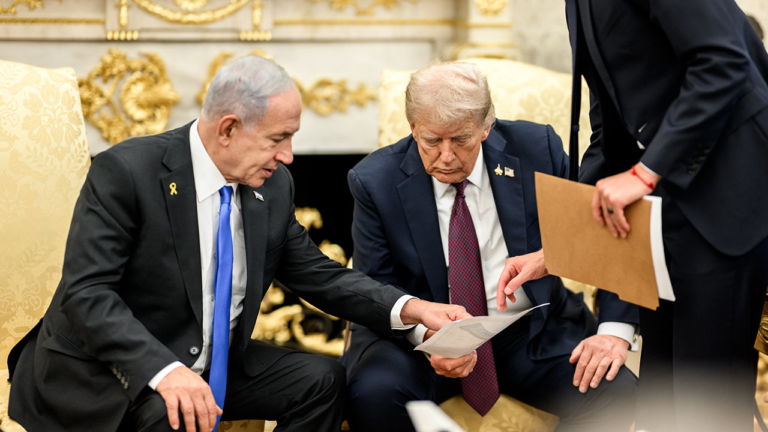United in Diversity – A Solution to the Federalist-Eurosceptic Debate
It seems clear that the European socio-economic and geopolitical scenery of 2025 is not the one of 68 years ago, when the Treaty of Rome was signed. Back then, the European club was composed of six members, and a single class membership made sense. Now, with almost 30 states at very diverse levels of socio-economic development, it goes without saying that it has become increasingly difficult to pursue the traditional “one-size-fits-all” approach. One of the largest divisions between these clusters is between the euro-ins and the euro-outs. According to former Italian Prime Minister Giuliano Amato, “We cannot expect all EU countries to join the euro, so this division is permanent.” The issue at hand is not the division per se, but rather the EU’s unwillingness to accept a decentralised institutional framework which supports cross-cutting interests and prevents policy deliberation upon the lowest common denominator. It is this very same unwillingness which has created multiple tensions between the EU and its members and citizens, and it is this very same unwillingness which has led to the failure of the “enhanced cooperation” treaty clause.
The following reform proposes to radically reshape the way we conventionally think about the EU by shifting its territorial integration into a functional one. This would avoid the traditional issues which have characterised the Union for at least a decade by “binding together those interests that are common, where they are common and to the extent to which they are common”, and organising international activities “specifically and separately, each according to its nature, to the conditions under which it has to operate and to the needs of the moment”.[1] Our proposal is about how a less-political definition of economic cooperation-cum-integration can be framed and organised.[2] We propose the creation of a Multi-Tier Europe (MTE). The aim of an MTE is to sustain deeper and wider economic integration, full participation in goods, services, capital mobility and some temporary labour mobility, while at the same time excluding freedom of movement of people and political integration and simultaneously expanding the EU’s international role.[3]
To achieve this, the EU should be reconstructed into the following four distinct and non-hierarchical Tiers, each supported by a new institutional framework:
- Tier-1 (T-1): Constituted by the Eurozone countries with federalist political aims and supranational constitutional structures which aspire to “an ever-closer union”.
- Tier-2 (T-2): “Soft” Eurosceptic countries that aspire to join the euro but are either not economically ready or unwilling to take the political risks associated with federalist integration.
- Tier-3 (T-3): “Hard” Eurosceptic countries that not only have decided not to join the euro and not take political obligations amongst them, but may also reject the principle of the free movement of people.
- Tier-4 (T-4): Countries which have not made enough economic or democratic advancements to join the EU but at the same time wish to participate in the EU Customs Regime and to collaborate in strategic partnerships regarding trade, investment, and defence.
The obvious challenge for an MTE cooperation would be to preserve the processes and structures of the EU as a supranational entity and at the same time ensure that its “looser” members have a say in common matters. For this reason, the Council as we know it would be replaced by the General Council (T-1+T-2+T-3+T-4), which would allow members to vote when a legislative procedure directly affects all Tiers. T-1, T-2, and T-3 would be able to pass legislation which exclusively regards their own Tiers. This would ensure that each member-state’s interest is fully represented according to the membership of the respective clusters. The single exception would be T-4, where, due to the more intergovernmental nature of its framework, members would have the right to participate in legislative procedures and propose amendments, but would not be able to pass laws singularly, nor would they hold a veto in the General Council. Moreover, it would be a political – not legal – commitment by EU member states to take into account the positions and deliberations of the T-4 Council.[1]
The same concept would apply to the European Parliament, while the voting system and all other current institutions would remain unchanged, with the European Court of Justice having jurisdiction exclusively in T-1 and T-2. Participation in the EU budget would also be vital, with each Tier having its own central budget according to its role and position in the European project.
A Europe for All Reasons
An MTE would be a win-win solution. It would provide a way out of the current political impasse and relaunch the European project.[1] This section will analyse the benefits for each Tier and its respective hypothetical members:
T-1 Benefits
As the economic crisis has proven to us, Eurozone countries need to develop deeper forms of integration, such as coordinated fiscal policy and a separate budget, so that the monetary union can function properly. The federalists have often identified the opposition from more Eurosceptic countries as the main drag towards this “closer union”. The division of T-1 would enable countries such as Germany, Belgium, Italy, Spain and France to finally press ahead with deeper integration, while at the same time allowing the rest of the Tiers to economically adjust and enter the single currency at the right time. Moreover, the institutional independence of T-1 would lead to the push for the final completion of the single market in the sectors of energy, services, e-commerce, defence procurement and workers’ rights. The EU’s estimated GDP growth rate from the completion of the single market in T-1 would be between 1.5-2%, with the full implementation of the service directive alone increasing its GDP by €340 billion.[1] This money could be used to create an Eurozone budget and at the same time increase the outflow for the Structural and Cohesion Funds, which would directly benefit all Tiers. At the same time, the western government’s concern regarding the undemocratic practice of letting all MEP’s vote on business that only pertains the Eurozone would be solved.
T-2 Benefits
The creation of the T-2 would enable less economically developed countries to push for deeper economic integration amongst each other, while at the same time, without sharing the political burden of the federalist project. The issue with the current institutional framework is that countries which are interested in the euro but do not meet the convergence criteria are forced to “rush” into the Eurozone without being economically prepared for it, as happened in the case of Greece. The greater the integration between the euro countries in terms of banking union, fiscal union and other initiatives, the harder it will become for other EU countries to join the single currency in the future.[2] In the words of Miroslav Lajčák, Slovakia’s foreign minister: “We have to be careful that we do not turn pre-ins into outs.” The T-2 would enable less economically developed countries to manage their economies at their own pace, while at the same time assuring them the political representation which has until now forced smaller nations to assume roles of “policy-takers” rather than “policy-makers”. T-2 would finally allow the Visegrad Group to achieve a “looser block”, with some powers returned to the state. Such a Tier would also allow weaker euro members, such as Greece, to change their partnership with the EU without creating the typical “all or nothing” divorce scenario.
T-3 Benefits
The current institutional framework has stopped countries from the European Economic Area from joining the EU due to the political burden and perceived loss of sovereignty, which its membership is often associated with. At the same time, Iceland, Liechtenstein, and Norway fully participate in the single market but do not have any significant say in its law-making process. This paper believes that the creation of T-3 would allow these highly developed economies to join the EU, while at the same time increasing their political representation within the T-3 Council without running the risk of being dictated by the Eurozone group.
The Brexit phenomenon should have warned us about how a large proportion of the European electorate has been increasingly rejecting the idea of free movement of people. The four freedoms of the European single market are closely economically connected, but not inalienable.[3] For this reason, T-3 should also comprehend an opt-out which allows countries to negotiate a temporary degree of labour mobility. This would allow a much clearer distinction between free movement of labour and free movement of people, enabling full labour mobility within the EU, but restricting migration rights to those who have a job.[4] Although Iceland, Liechtenstein, and Norway all participate in the European Single Market and therefore must abide by the “four freedoms”, such a Tier would become optimal for countries such as the UK and Switzerland. The T-3 approach could potentially meet the needs of both federalists and “hard” Eurosceptics and find a mutually beneficial solution to the Brexit debate.
T-4 Benefits
Finally, the fourth Tier would allow the EU to continue to expand its customs regime and at the same time project European interests on a global stage. T-4 would provide the grounds for a strengthened relationship with the EU neighbours in the Balkans and in the east. Potential candidates for this Tier could be Albania, Bosnia and Herzegovina, Montenegro, Serbia, Kosovo, Ukraine, Moldova, Macedonia, Armenia, Georgia, Azerbaijan, Andorra, Liechtenstein, Monaco, San Marino, and the Vatican City and with time, possibly even Belarus and Russia. At the same time, the T-4 will allow enhanced strategic cooperation on matters of security and trade, also with the south – namely Morocco, Algeria, Tunisia, and Libya. The intergovernmental character of such a Tier would enable the EU to finally project a long-term, coherent foreign policy within its region. Other nations which participate in the European Neighbourhood Policy could, in time, be incorporated within this bloc. The creation of a T-4 might also provide a basis for coming to honest terms in the negotiations with Turkey, consequently deterring a drift from democracy and associated values while avoiding the free movement of people.[5]
Conclusion
It is undeniable to say that a multi-tier and multi-speed Europe already exists. Proof of this is the several emerging clusters or clubs which evolve around different interests regarding economic integration, foreign policy, and immigration. Between some countries, these interests overlap. Mostly, they do not. The Union should accept this diversity and embrace it in a functionalist model, where a clear set of institutions for each cluster can help further vertical integration. It is important to see the MTE project and its Tiers not as fragmented and rigid divisions of economic development, but rather as porous and mutually beneficial segments of the same Union, which, in time, will allow countries to gradually progress towards T-1 at their own pace. Therefore, the most significant challenge for the EU in the coming years will be for it to recognise that the separation of interests can and will result in a reciprocally advantageous relationship, and, following this, to set up a robust institutional framework in order to back up this recognition. In the words of Amato, until then, the EU will “look more like a Picasso than an Expressionist painting.”[6]
Bibliography
[1] CENTRE FOR EUROPEAN REFORM. 2012. “A multi-tiered Europe? The political consequences of the euro crisis.” p.3
[2] CENTRE FOR EUROPEAN REFORM. 2012. “A multi-tiered Europe? The political consequences of the euro crisis”. p.2
[3] PISANI-FERRY, J. et al. “Europe after Brexit: A proposal for a continental partnership.” p.5
[4] FINANCIAL TIMES. 2016. “A two-tier model to revive Europe.” Accessed Via World Wide Web: https://www.ft.com/content/2b113d6c-76a2-11e6-bf48-b372cdb1043a
[5] PISANI-FERRY, J. et al. “Europe after Brexit: A proposal for a continental partnership.” p.5
[6] CENTRE FOR EUROPEAN REFORM. 2012. “A multi-tiered Europe? The political consequences of the euro crisis.” p.2
[1] OFFICIAL JOURNAL OF THE EUROPEAN UNION. 2017. “Opinion of the European Economic and Social Committee on the Contribution to the European Council of 15-16 June 2006 — Period of reflection.”
[1] PISANI-FERRY, J. et al. “Europe after Brexit: A proposal for a continental partnership.” p.7
[1] EILSTRUP, M. et al. “Debates on European Integration”. p.47
[2] PISANI-FERRY, J. et al. “Europe after Brexit: A proposal for a continental partnership.” p.6
[3] PISANI-FERRY, J. et al. “Europe after Brexit: A proposal for a continental partnership.” p.6



